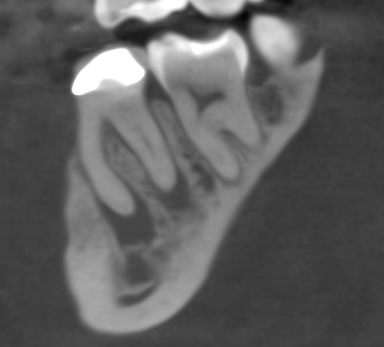The first step in removing a dental infection is correctly diagnosing a tooth (or teeth) that has developed a dental infection or abscess. During emergency dental visits or routine dental exams, some patients report pain in one or more teeth however infected teeth are often without localized pain.
Localized Symptoms of Infected Teeth:
Infected teeth often develop deep periodontal pockets from which we contrast with previous periodontal measurements. Infected teeth can develop a pus discharge which can ooze from the surrounding gums or form what’s called a parulus which is looks like a pimple in the mouth. This pimple is filled with pus that is attempting to drain from the site of infection into the oral cavity. A draining parulus is called a sinus tract which can also be detected during a dental exam. Patients often report a disagreeable taste in their mouth when this occurs. During cases of advanced infection, teeth can start to become loose (mobile) because the infection causes rapid bone loss around the tooth and the lack of bone reduces a tooth’s attachment. This mobility is interpreted to me as the body’s attempt to remove the tooth on its own by destroying the bone that anchors it. Our CBCT machine is infinitely invaluable in our ability to detect, identify, and safely treat dental infections.

Can Antibiotics Treat Dental Infections:
Dental infections in natural teeth do not respond to oral antibiotics because there is no blood flow in an infected root canal treated or necrotic (dead) natural tooth. The canal space inside a natural tooth serves as a place bacteria can grow that cannot be accessed by the bodies natural immune system like it can in other parts of the body.
Surgical Infection Removal:
Once an infection is identified we frequently surgically removal the tooth and infection. During this procedure the infection we visualize on the CBCT is removed using a surgical instrument called a curette. We also use the curette to remove the periodontal ligament inside the extraction socket. After the socket is clean from leftover ligament and infected tissue we place a bone graft in the socket. The bone graft is used along a technique called “socket preservation” which enables a healthy volume of bone to grow in the area the tooth roots used to be. After the infection and tooth is surgical removed, the bone graft will repair the defect in the bone that was caused by the infection.
After the bone graft heals the patient can replace the missing tooth with a dental implant.
